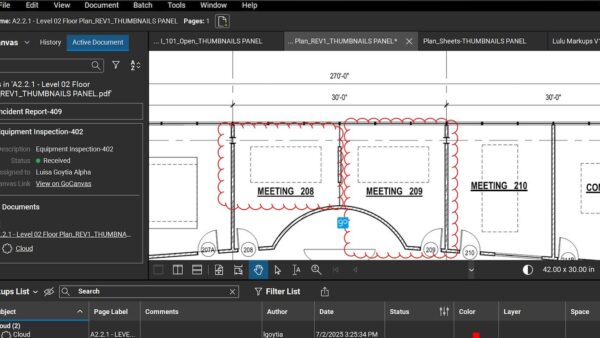Casey Rutland, director of digital construction consultancy Digital Green, asks whether BIM has become a ‘business’ in its own right.
According to a statement by the Construction Industry Council in 2014, economists have estimated that the UK market for BIM-related services (in a global context) will be £30bn a year by 2020.
This will be made up of the thousands of already experienced UK-trained people, who are working in the UK or overseas for major companies. There are individuals who have set up new companies, training providers who have added new services, design consultants or contractors trying to charge more for BIM and conference organisers filling their space.
Is BIM in its own economic bubble asks @CaseyRutland – https://t.co/CpPGGqX2QO
— BIM+ (@BIM_PLUS) January 10, 2017
Trades shows, conferences, and industry media
Barely a week goes by without a BIM event in the UK. From paid conferences, software company events, industry award ceremonies, to product manufacturer promotions and free discussion events – they’re everywhere.

Casey Rutland
While only some of these are held to make money, they all, in one way or another, add to the culture of innovation and drive that many of us have, to improve and promote better ways of working.
The networking aspect of these events is entirely underrated, and I’d recommend that you attend as many as practicably possible – not only do they highlight the fact that the industry is evolving at an ever-increasing pace, but they also add genuine value to our support and knowledge-sharing community.
Then we have industry publications. No matter which you pick up, there will be an article relating to BIM relevant to their core readers. Whether written by practitioners, observers or interested parties outside of construction, they too start the conversations that need to be had.
People and skills movement
Some of you may know already that for five years now, I have been a list of people who have moved from one company to another throughout the year. While only being a small sample of the “movers”, the stats have already provided a great insight into the roles that are more commonly required and which companies are active in hiring them.
The industry has already been through periods when BIM consultants and software companies have hired a significant number of the “vocal” BIM practitioners. Now we’re in a period where design and construction companies are struggling to fill roles with experienced people.
I’m also noticing that companies new to BIM aren’t necessarily hiring with realistic expectations – hiring a software user to make fundamental business process change isn’t always the right solution. Equally, hiring a business process expert to make changes in day-to-day project delivery may also not be suitable. What we really need to see is a balanced expectation of what is achievable with staff of relevant experience.
Training, qualifications and certification
I often take time to explain to younger staff that BIM is not a career. I’m quite aware of the irony of this given my roles in the past eight years, but the message is simple: BIM in the UK is a way of working, it’s the way you do your job. That’s true for every part of the supply chain, from client right through to the people responsible for the asset operation.
The emphasis, therefore, is to qualify in your role, then learn the “BIM way” through any of the numerous training courses available, or from colleagues, or self-learn. The resources out there are wide and varied.
Once you’ve trained a number of staff and, ideally, have experience of live project delivery, you have the option of becoming certified. Again there are a number of options but the more common ones are Lloyd’s Register, BRE, BSi, and Ocean. All of these will prove that you have the systems and processes in place to be able to deliver BIM Level 2. This, no doubt, provides employers with a level of comfort that you can deliver what is being asked.
As you can see, even simply up-skilling your staff requires a number of companies to fulfil the overall needs and that is why BIM has its own economic bubble.
Demise of the UK government BIM Level 2 Task Group
Yes, the Level 2 task group is no more. But why? The reason is that the role of implementation support has been passed down to the UK BIM Alliance, and the relevant BIM Regions groups.
Also, since the spring Budget (where Digital Built Britain was announced, with a significant sum of money allocated), we now have the beginnings of a new group looking to support the industry in moving beyond the benchmark set by BIM Level 2, into an era of working with digital transactions at every point of exchange.
It seems a significant leap, but once industry is comfortable with standardised output and communication (not standardised buildings) the move to “digital everything” is less daunting.
If there is a completely different BIM bubble, is it detrimental to the industry’s evolution? And how long will it last?
What I’d say is that despite the advances some have made in the past 15 years or so, BIM adoption is yet to fully penetrate the industry as a whole.
There are still naysayers, people with the opinion that BIM won’t affect them, and those who say it’s “just a fad” and that all those working with BIM as a focus in their career will soon advance to “business as usual” and we’ll be out of a job.
All I can say to those people is that, by then, us “BIMmers” will have moved on to the next best way of designing, delivering and operating the built environment. Most people fully engaged with BIM are the ones looking forward, not standing still. We are doing what we can to better the industry and for this reason I’m happy with how we’ve progressed and, crucially, where we’re heading.
Bubble image: Bezmaski/Dreamstime.com














